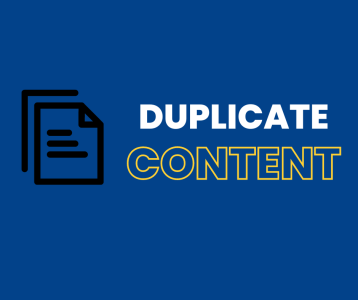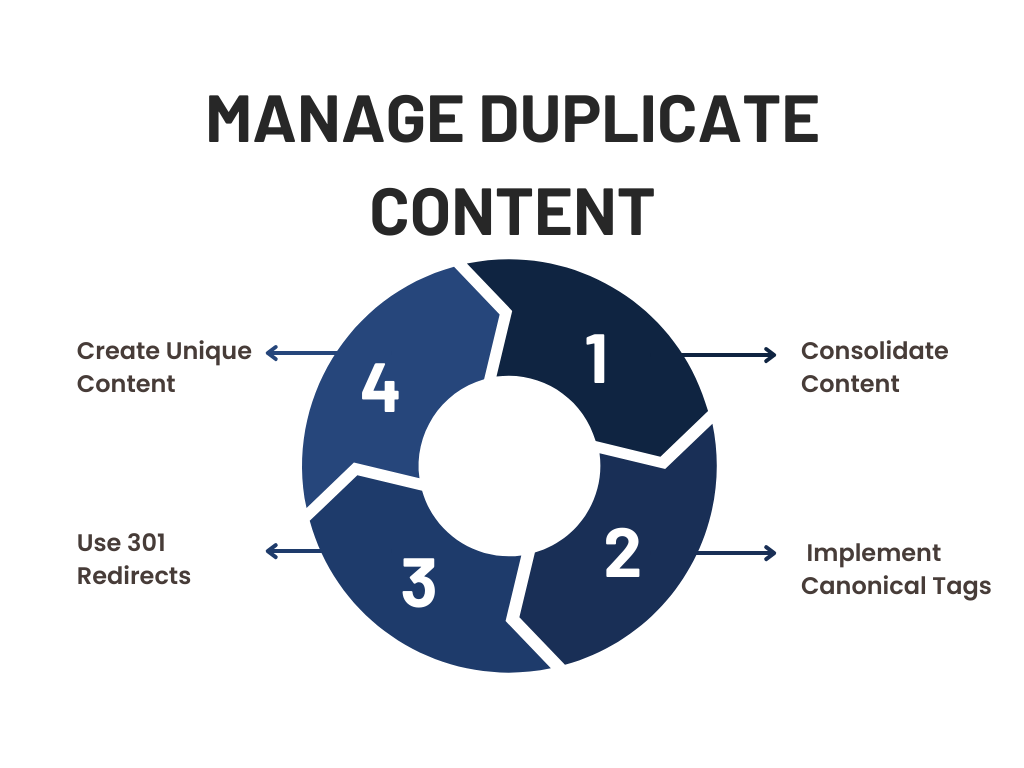When managing a website, especially one rich in content, it’s common to question the impact of repeated information on your SEO performance. Does duplicating content or rehashing similar information across different pages negatively affect your website’s ranking?
This blog will dive into the complexities of repeated content, clarify myths, and provide actionable advice to optimize your site for search engines while keeping your content strategy robust.
Understanding Duplicate Content
Duplicate content refers to blocks of text that are identical or very similar across different web pages, whether on your own site or across multiple sites. This can include entire pages, paragraphs, or even just snippets of text. Google’s algorithm prefers unique content, which provides value and a fresh perspective to users. When a search engine encounters duplicate content, it can struggle to determine which version to rank, potentially impacting your website’s visibility in search engine results pages (SERPs). This can happen unintentionally due to various reasons, such as:
- Product descriptions: E-commerce websites often have product descriptions that are repeated across different product pages with minor variations like size or color.
- Blog posts: You might have a blog post that you want to repurpose as a cornerstone page on your website.
- Thin content: Websites with limited content might resort to copying information from other sources, resulting in duplicate content.

Can Duplicate Content Hurt Your SEO?
While Google’s algorithms are becoming increasingly sophisticated at understanding the context of content, duplicate content can indeed hurt your SEO in a few ways:
- Content Cannibalization
When you have multiple pages with similar content, search engines might struggle to determine which page is the most relevant for a particular search query. This can lead to content cannibalization, where your own pages compete with each other for ranking, ultimately diluting your website’s ranking potential.
- Wasted Crawl Budget
Search engines allocate a specific “crawl budget” for each website, which determines how many pages their bots will crawl and index during a session. If your site has a lot of duplicate content, search engines may waste their crawl budget on these repetitive pages, leaving other valuable content undiscovered and unindexed. This can severely limit your site’s visibility and impact your SEO efforts.
- Poor User Experience
Duplicate content can lead to a poor user experience. Visitors who land on a page with repetitive content might feel like they’ve seen it before, leading them to bounce off your website and search for information elsewhere. This can negatively impact your website’s dwell time and bounce rate, which are both ranking factors for search engines.
How to Prevent and Manage Duplicate Content
Fortunately, there are steps you can take to mitigate the negative effects of duplicate content and ensure your website is SEO-friendly:
- Consolidate Content: If you have multiple pages with similar content, consider consolidating them into a single, comprehensive page. This will provide a more in-depth exploration of the topic and avoid confusing search engines.
- Implement Canonical Tags: If consolidation isn’t possible, you can use canonical tags to specify the original version of a piece of content. This helps search engines understand which URL to prioritize for indexing and ranking.
- Use 301 Redirects: For pages with very similar content, you can use 301 redirects to point users and search engines to the most relevant and valuable page.
- Create Unique Content: The best way to avoid duplicate content issues is to focus on creating unique and valuable content for each page of your website. Conduct keyword research to identify topics that are relevant to your target audience and provide fresh insights or perspectives.

Additional Tips
- Use internal linking: Link to relevant pages within your website to help search engines understand the structure and hierarchy of your content.
- Focus on user intent: When creating content, prioritize the needs and interests of your target audience. What information are they looking for? How can you help them achieve their goals?
- Regularly audit your website: Use SEO tools to scan your website for duplicate content and identify areas for improvement.
By following these tips, you can create a website that is not only SEO-friendly but also informative and engaging for your visitors.
When Duplicate Content Might Be Okay
Not all duplicate content is bad. There are instances where repeating information is necessary and even beneficial:
- Legal Disclaimers and Terms of Service
Legal text, such as disclaimers, privacy policies, or terms of service, often needs to be repeated across multiple pages or even sites. Since this content is necessary and doesn’t compete for SEO keywords, search engines generally understand and won’t penalize your site for it.
- Multi-Language Sites
If your website operates in multiple languages, it’s likely that content will be repeated across language versions. In this case, it’s essential to use the hreflang attribute to tell search engines about the language and regional targeting of the pages. This helps avoid duplicate content issues while ensuring that users in different regions find the appropriate version of your site
Conclusion
A small amount of duplicate content, especially if it’s not the main content of the page, is unlikely to significantly impact your SEO. However, it’s still a good practice to minimize it as much as possible. By following the strategies outlined above, you can ensure your website has a strong foundation of unique and informative content that will help you rank higher in search engine results pages.
FAQs
Duplicate content itself is not a direct penalty from Google, but it can lead to issues. When the same content appears on multiple pages, Google’s algorithms might struggle to determine which version is the most relevant for a given search query. This can dilute your site’s ranking potential. Google may choose to ignore the duplicate content or consolidate its ranking signals, leading to lower visibility for the affected pages.
There isn’t a specific percentage of duplicate content that’s “acceptable.” Google understands that some duplicate content is unavoidable (e.g., legal disclaimers, product descriptions). However, excessive duplication can be problematic. The key is to ensure that the majority of your content is unique and adds value. Using canonical tags can help tell Google which version of a page to prioritize if duplication is necessary.
Having identical content on two different websites can be risky. Google may view this as an attempt to manipulate search rankings, which can lead to neither site ranking well. If you must share content across sites, consider using a canonical tag to indicate the original source, or better yet, rewrite the content to make it unique for each site.
If someone copies your content, it can harm your SEO, especially if their site gets indexed first or has a higher authority. Google tries to identify the original source, but this isn’t foolproof. If the copied content ranks higher, it can divert traffic away from your site.
You can use tools like Copyscape, Siteliner, or even Google Search Console to check if your content has been duplicated elsewhere on the web. Enter a snippet of your content into Google search with quotes around it to see if other sites have copied it fully.
If your content is copied, you can take several steps:
- Contact the site owner: Politely request them to remove the content.
- Use Google’s DMCA tool: File a Digital Millennium Copyright Act (DMCA) complaint to have the content removed from search results.
- Set up a canonical link: If you syndicate your content to other sites, use canonical tags to point back to the original version on your site.
- Monitor for future copies: Continuously monitor your content for duplication to protect your site’s SEO integrity.

